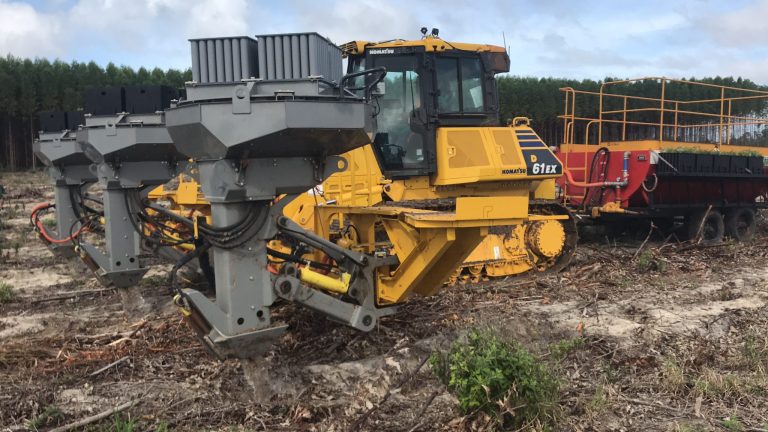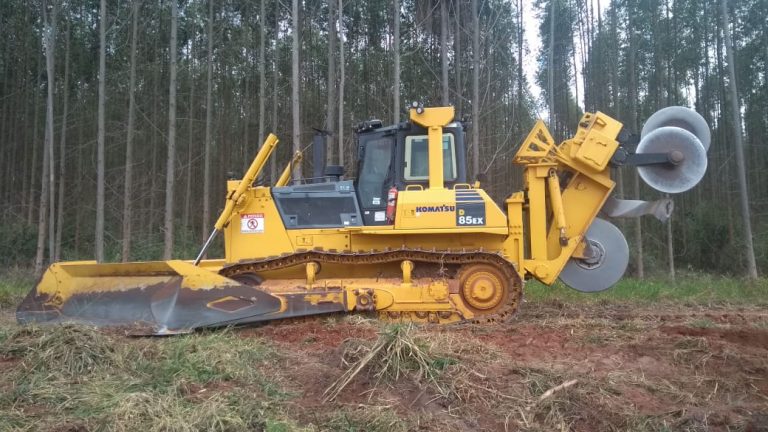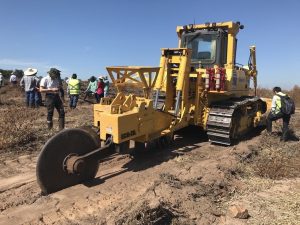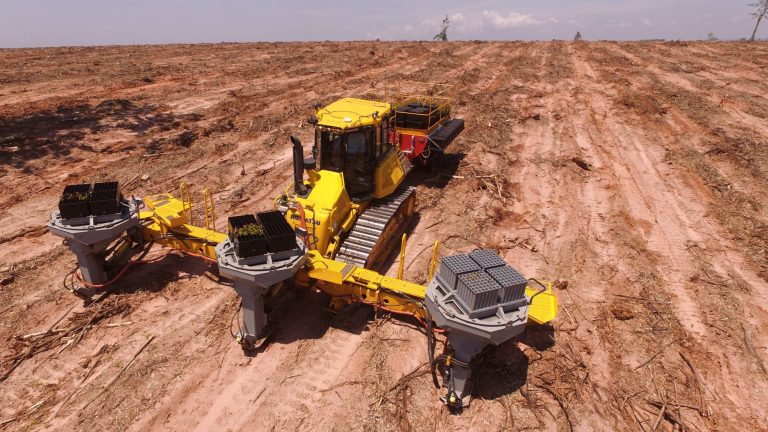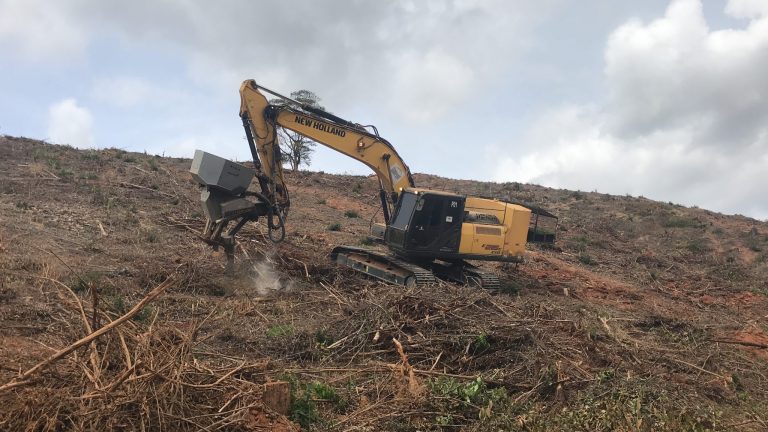Recently we wrote about the Swedish PlantmaX planter that was developed for forestry in the northern hemisphere. The Komatsu D61EM is a planter for plantation forestry, manufactured in Brazil, with partly Swedish components.
Mechanized planting, the ever-debated issue
One can think that it would be easier in some places, such as where the terrain is flat and the stumps have been removed. But for some reason, the development of mechanized planting hasn´t come any further in those places.
I will not go any deeper into why this is so. Instead, I want to focus on the fact that the Brazilians looked at technology from the Nordic countries, Sweden and Finland when they decided to go for mechanized planting. They bought planting heads from those countries, tested them and discussed adaptions with the manufacturers. The result was that they managed to get good equipment that suited their conditions.
Win-win situation
Another benefit, for the manufacturers, was that some of the adaptions made for south America could be used also in Europe and other markets. As mentioned in the previous article Swedish Forestry #3 the development of planting machines for the forest more or less stopped in the early 90’s due to that east Europe was opened and masses of cheap labor came over to the west to plant.
So, partly thanks to the requirements from Brazil the development of mechanized planting took off again around 2010.
The Komatsu D61EM Planter
Plantation forestry is more comparable to agriculture than what we in the northern hemisphere call forestry. The Komatsu D61EM is built to operate on flat ground and in straight rows.
The machine is equipped with three planting heads, manufactured by Bracke Forest in Sweden, side by side which makes it a three-row planting machine. The soil is prepared beforehand with a sub-soiler. Every plant receives a preset amount of water through the planting heads. Water tank and plant storage are placed on a trailer behind the Komatsu dozer.
The Komatsu D61EM planter plants 900 plants per hour.
GPS controlled
The sub-soiler fertilizes the soil, and creates a map, with GPS, to mark the planting rows. This map is uploaded to the planter which then will be controlled by the map. The GPS system also controls the spacing between the plants in each row. It also records the planting spots. The spacing has to be set before the planting starts.
The planter then follows the tracks of the sub-soiler automatically. The operator monitors the fully automated process. Turn the machine around at the end of each row and sets to automatic mode when the machine is in the right position to start planting again.
Manufacturers
The machine is manufactured by Komatsu do Brazil (construction equipment) and sold by Komatsu Forest in Brazil. The control system is made by Hexagon and the planting heads by Bracke Forest in Sweden.
Terrain
You can never get away from the fact that working in the forest means handling different ground conditions, also in plantations. The steep sites, and the steep parts of sites, are in this case planted with an excavator mounted Bracke planter that can operate in slopes up to 27 degrees.
Markets
The Komatsu D61EM is meant to be available on markets where forest plantation is used as a method. That would be South America, the southern parts of Asia, Africa and the southern parts of Europe. Maybe this concept also could be used in the south US?
Here is a short film of the machine, produced by the Laboratory of Agroforest Biomass and Bioenergy in Brazil
Thanks to Dr. Rafael Ribeiro Soler at Bracke Forest South America for his assistance with film and photos.
Photos and film: Laboratory of Agroforest Biomass and Bioenergy






